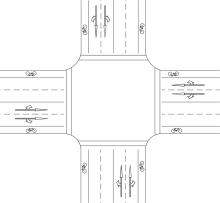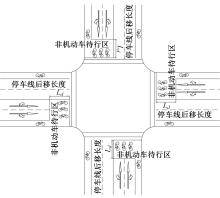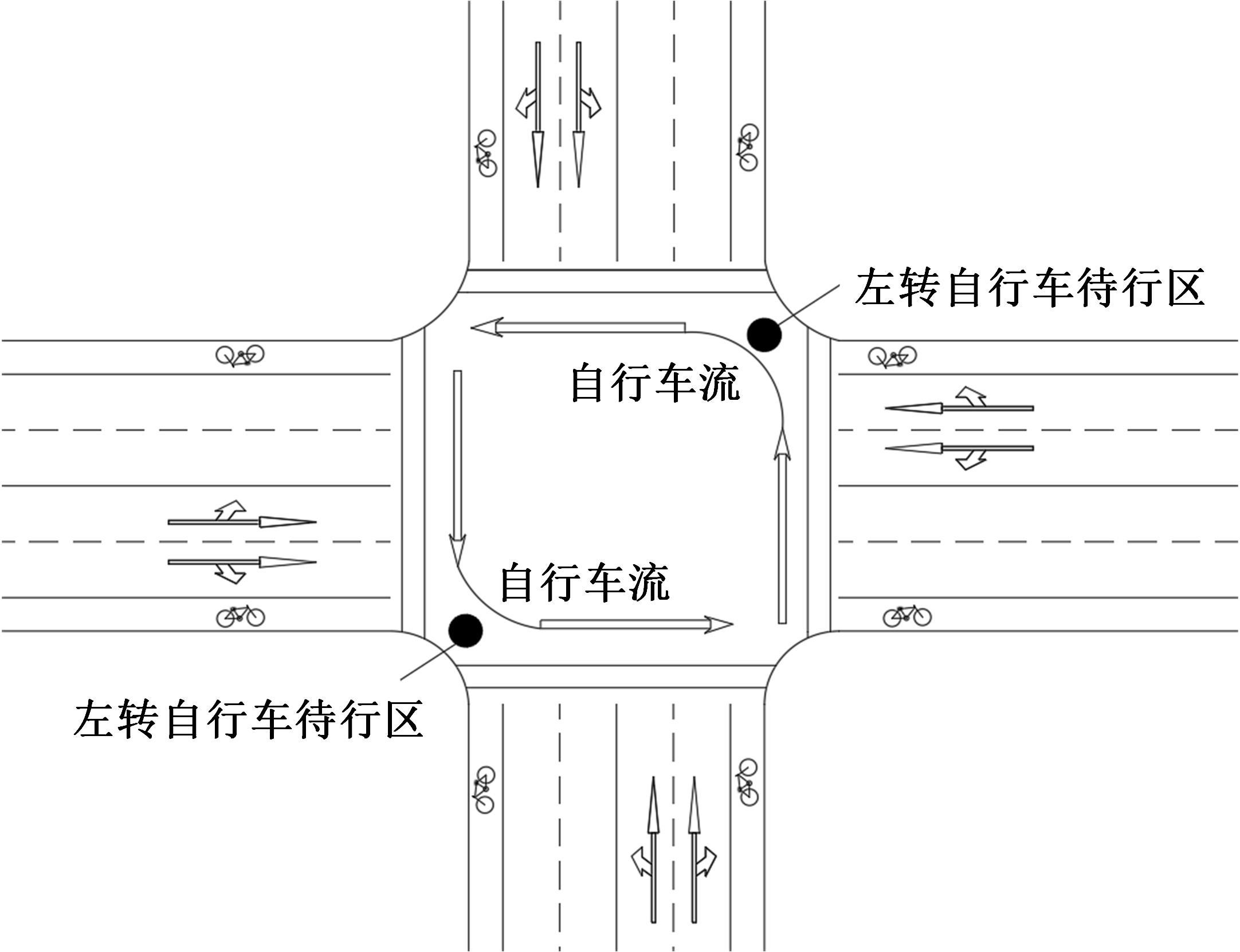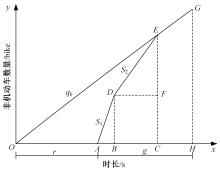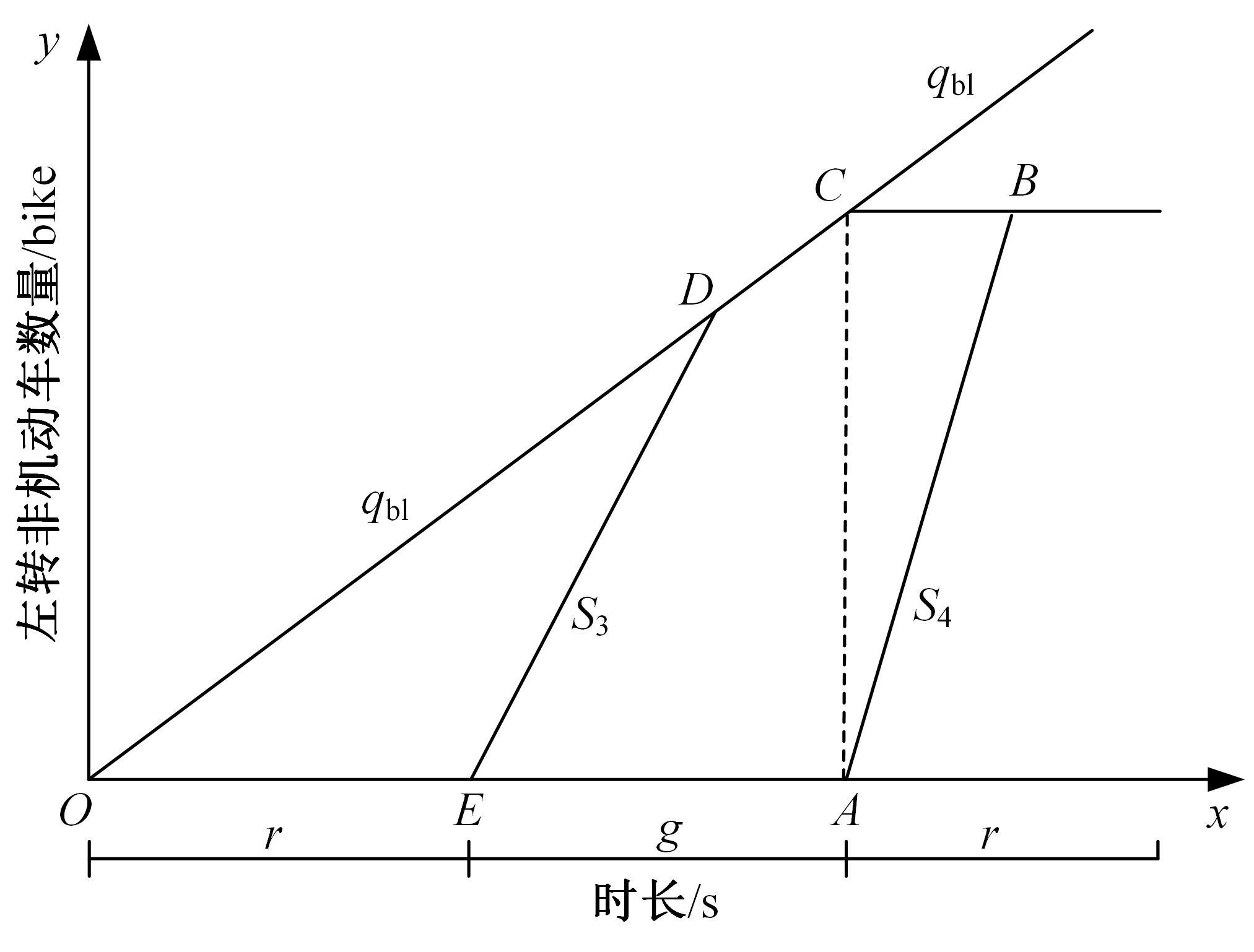Journal of Jilin University(Engineering and Technology Edition) ›› 2022, Vol. 52 ›› Issue (3): 550-556.doi: 10.13229/j.cnki.jdxbgxb20210258
Two-phase signal intersection delay based on three crossing modes
Tian-jun FENG1,2( ),Xue-lu SUN1,Jia-sheng HUANG1,Xiu-juan TIAN1,2(
),Xue-lu SUN1,Jia-sheng HUANG1,Xiu-juan TIAN1,2( ),Xian-min SONG3
),Xian-min SONG3
- 1.School of Transportation Science and Engineering,Jilin Jianzhu University,Changchun 130118,China
2.Engineering Research Center of Traffic Disaster Prevention and Control in Cold Region,Jilin Jianzhu University,Changchun 130118,China
3.College of Transportation,Jilin University,Changchun 130022,China
CLC Number:
- U491
| 1 | . 交通信号控制指南:德国现行规范(RilSA) [S]. |
| 2 | 李锐,郑长江,袁黎,等. 基于等效流率的两相位信号交叉口车均延误模型[J]. 长安大学学报: 自然科学版, 2015, 35(): 95-99. |
| Li Rui, Zheng Chang-jiang, Yuan Li, et al. Average delay model for two-phase signalized intersectionbased on equivalent traffic flow rate[J]. Journal of Ch-ang'an University(Natural Science Edition), 2015, 35(Sup.1): 95-99. | |
| 3 | 董亚茹. 人行横道交通延误计算方法与优化控制策略研究[D]. 北京: 北京交通大学交通运输学院, 2016. |
| Dong Ya-ru. Research on the calculation method of tra-ffic delay and optimal control strategy at the crosswalk[D]. Beijing: College of Transportation, Beijing Jiaotong University, 2016. | |
| 4 | 张亚平,陈烨,祁首铭,等. 信号控制交叉口转向延误概率模型[J]. 吉林大学学报:工学版,2020,50(6): 2113-2121. |
| Zhang Ya-ping, Chen Ye, Qi Shou-ming, et al. Model of controlled intersection turning delay based on probabilistic principle[J]. Journal of Jilin University(Engineering and Technology Edition), 2020, 50(6): 2113-2121. | |
| 5 | 李锐,李文权,邱丰. 考虑主路左转延误的主路优先交叉口信号设置流量阈值[J]. 东南大学学报:自然科学版, 2012, 42(3): 551-554. |
| Li Rui, Li Wen-quan, Qiu Feng. Signal setting critical volume for two-way stop controlled intersection based on major left-turn delay[J]. Journal of Southeast University(Natural Science Edition),2012,42(3): 551-554. | |
| 6 | 周晨静,荣建,冯星宇. 自行车对相邻直行机动车交通流干扰延误研究[J]. 北京工业大学学报,2015,41(5): 742-748. |
| Zhou Chen-jing, Rong Jian, Feng Xing-Yu. Effects of bicycle traffic on vehicular delays at signalized intersec-tions with pre-right-turn lanes[J]. Journal of Beijing University of Technology, 2015,41(5): 742-748. | |
| 7 | 别一鸣,汤茹茹,王运豪,等. 信号交叉口进口车道饱和流率估计方法[J]. 吉林大学学报: 工学版, 2019, 49(5): 1459-1464. |
| Bie Yi-ming, Tang Ru-ru, Wang Yun-hao, et al. Saturation flow rate estimation method of approaching lanes at signalized intersections[J]. Journal of Jilin University (Engineering and Technology Edition), 2019, 49(5): 1459-1464. | |
| 8 | Li Xi-guang, Li Guo-qiang, Pang Su-seng, et al. Signal timing of intersections using integrated optimization of traffic quality, emissions and fuel consumption: anote[J].Transportation Research Part D: Transport and Environment, 2004, 9(5): 401-407. |
| 9 | Gao Yu-hong, Qu Zhao-wei, Jiang Jing-ling, et al. Mix-ed traffic flow signal timing method considering E-Bi-ke expansion influence[J]. Journal of Transportation Engineering, Part A: Systems, 2021, 147(2): No. 04020155. |
| 10 | 马东方,王殿海,陈永恒. 两相位交叉路口最小信号周期时长[J]. 吉林大学学报:工学版, 2011, 41(2): 338-342. |
| Ma Dong-fang, Wang Dian-hai, Chen Yong-heng. Minimum cycle length of two-phase road intersection[J]. Journal of Jilin University (Engineering and Technology Edition), 2011, 41(2): 338-342. | |
| 11 | 陈永恒,白乔文,魏雪延. 设有待转区的左转专用车道车辆释放过程建模[J]. 交通运输系统工程与信息, 2014, 14(1): 174-179. |
| Chen Yong-heng, Bai Qiao-wen, Wei Xue-yan. Departure processes model for left-turn laneson waiting area[J]. Journal of Transportation Systems Engineering and Infor-Mation Technology, 2014, 14(1): 174-179. | |
| 12 | 顾晨阳. 二相位交叉口左转非机动车交通组织评价与方案比选研究[D]. 成都: 西南交通大学交通运输与物流学院, 2020. |
| Gu Chen-yang. Study on evaluation and screme selection of left turn non-motor vehicle traffic organization at two-phase intersections[D]. Chengdu: School of Transportation and Logistics, Southwest Jiaotong University, 2020. |
| [1] | Yan-feng JIA,Da-yi QU,Lu LIN,Rong-han YAO,Xiao-long MA. Coordinated speed control of connected mixed traffic flow based on trajectory [J]. Journal of Jilin University(Engineering and Technology Edition), 2021, 51(6): 2051-2060. |
| [2] | Chang-fu ZONG,Long WEN,Lei HE. Object detection based on Euclidean clustering algorithm with 3D laser scanner [J]. Journal of Jilin University(Engineering and Technology Edition), 2020, 50(1): 107-113. |
| [3] | Liang JIANG,Yi HE. Risky driving behavior and influencing factors analysis for electric two⁃wheeler [J]. Journal of Jilin University(Engineering and Technology Edition), 2019, 49(4): 1107-1113. |
| [4] | Xiao⁃qin LUO,Dian⁃hai WANG,Sheng JIN. Traffic signal actuated control at isolated intersections for heterogeneous traffic [J]. Journal of Jilin University(Engineering and Technology Edition), 2019, 49(3): 695-704. |
| [5] | Zhi⁃hui LI,Tao ZHONG,Yong⁃hua ZHAO,Yong⁃li HU,Hai⁃tao LI,Jing⁃wei ZHAO. Pedestrian tracking algorithm for autonomous driving [J]. Journal of Jilin University(Engineering and Technology Edition), 2019, 49(3): 680-687. |
| [6] | QU Da-yi,YANG Jing-ru,BING Qi-chun,WANG Wu-lin,ZHOU Jing-chun. Arterial traffic offset optimization based on queue characteristics at adjacent intersections [J]. Journal of Jilin University(Engineering and Technology Edition), 2018, 48(6): 1685-1693. |
| [7] | LI Zhi-hui, HU Yong-li, ZHAO Yong-hua, MA Jia-lei, LI Hai-tao, ZHONG Tao, YANG Shao-hui. Locating moving pedestrian from running vehicle [J]. 吉林大学学报(工学版), 2018, 48(3): 694-703. |
| [8] | SUN Zong-yuan, FANG Shou-en. Hierarchical clustering algorithm of moving vehicle trajectories in entrances and exits freeway [J]. 吉林大学学报(工学版), 2017, 47(6): 1696-1702. |
| [9] | ZHANG Zhe, JIA Li-min, QIN Yong, YUN Ting. Equalization-based feedback control model of pedestrian counter flow [J]. 吉林大学学报(工学版), 2017, 47(6): 1728-1737. |
| [10] | SHAO Sai, BI Jun, GUAN Wei. Electric vehicle routing problem with charging and dynamic customer demands [J]. 吉林大学学报(工学版), 2017, 47(6): 1688-1695. |
| [11] | LI Ye, WANG Wei, XING Lu, WANG Hao, DONG Chang-yin. Improving traffic efficiency of highway by integration of adaptive cruise control and variable speed limit control [J]. 吉林大学学报(工学版), 2017, 47(5): 1420-1425. |
| [12] | LI Xian-sheng, MENG Fan-song, ZHENG Xuan-lian, REN Yuan-yuan, YAN Jia-hui. Driver's visual characteristics based on stress response [J]. 吉林大学学报(工学版), 2017, 47(5): 1403-1410. |
| [13] | LI Zhi-hui, WANG Kun-wei, SONG Xian-min, LIU Xin-shan, SHEN Yao, LUO Rui-qi. Roundabout travel time prediction based on characteristics of lane choosing [J]. 吉林大学学报(工学版), 2017, 47(5): 1411-1419. |
| [14] | WAN Ping, WU Chao-zhong, LIN Ying-zi, MA Xiao-feng. Driving anger detection based on multivariate time series features of driving behavior [J]. 吉林大学学报(工学版), 2017, 47(5): 1426-1435. |
| [15] | JIANG Pan, YANG Jia-qi, FANG Rui-wei. Bi-level programming model for optimization of urban agglomeration comprehensive transportation corridor layout [J]. 吉林大学学报(工学版), 2017, 47(4): 1061-1067. |
|
||
